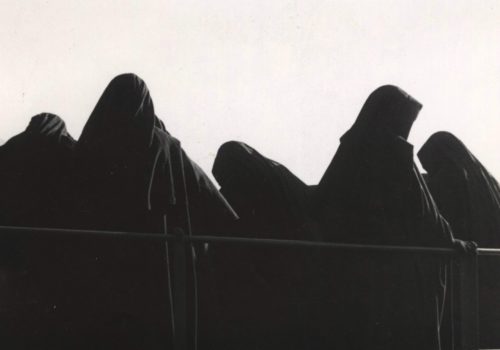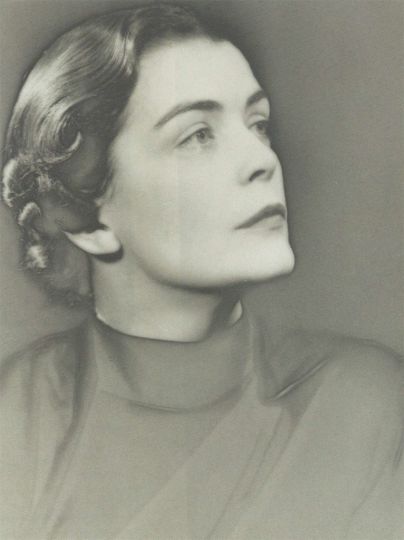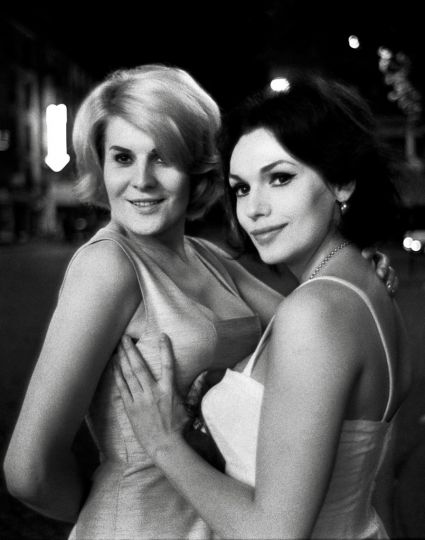Kicken Berlin opens the 2013 exhibition season with a presentation of works by Man Ray and Christer Strömholm. 1920s avant-garde in cameraless photography, Rayographs and object art in mixed media: these are the key elements of Man Ray’s photographic oeuvre.
Man Ray
Man Ray actively participated in and critically shaped the twentieth century’s most important artistic movements, including Dada and Surrealism. In New York in the 1910s Man Ray focused on painting, collages, and sculpture; he was also versed in the medium of photography and its creative potential early on. Photography began to play a more crucial role in his work in Paris in 1921. Commissions such as artist documentations and fashion and portrait projects simultaneously provided lucrative business opportunities and room for experimentation. At the same time, his experiments in cameraless photography came to fruition: the Rayograph. Together with Christian Schad and László Moholy-Nagy, Man Ray was one of the 1920s pioneers of the art of the photogram, which opened new perspectives in the traces of light left by everyday objects. In the context of photography, Man Ray’s photograms represent an attempt to explore “reveres beyond the empirical world.” Klaus Honnef summarizes: “His photographic images capture the precarious moment in which the substance of the thing transitions into an apparition of itself; they transmit the lingering sense of physicality and are in fact ephemeral figures of light and fixed shadows.”
In addition to the masterly alienated portraits of his muses and models like Kiki de Montparnasse, Lee Miller and Meret Oppenheim, the Rayographs were some of Man Ray’s most popular work. A selection of these images were reprinted in the early 1960s. The things of daily life afforded Man Ray manifold impetus to artistic transformation, indeed metamorphosis. The example set by Marcel Duchamp and his readymades prompted Man Ray to create surprising and new combinations of objects of the most diverse uses. One of the most well known examples is the piece ‘Cadeau‘ from 1921, which reveals an iron with a jagged edge of teeth.
In many cases Man Ray returned to a works’ earlier idea in a later edition, as in the case of ‘Cadeau‘, present here in 12 copies from 1974. The photograms attest to Man Ray’s tireless enthusiasm for experimentation and transformation, a curiosity that prompted other experimental techniques such as solarization, as in ‘Calla Lilies‘ from 1930, and collages, such as ‘White the black and white room‘ (1954).
Man Ray periodically reorganized his works, for example in photographs. In 1944 he planned a publication of his favorite works – ‘Objects of My Affection‘ – which where summarized in an annotated list. Among these favorite objects was ‘White the black and white room‘ from 1954, a collage of photomontage and cutouts, which he photographed for the project.
Christer Strömholm
Swede Christer Strömholm stands for the midcentury abstraction in the European movement of subjective photography. He is one of the mosts important Swedish photographers of the 20th century.
In the early 1950s – under the name Christer Christian – he joined the German group footoform, which had formed around Peter Keetman, Toni Schneiders, Otto Steinert and others in 1948. The members were united by their rejection of the conventional concept of photography. The loner Strömholm soon went his own way again, but his entire oeuvre reflects the fundamentals of the subjective perspective and experimental visual language formed by his association with the group. Paris was long home to Strömholm and launch site of his numerous trips into the world.
His central themes are the world as a realm of symbols, obscure likenesses, the fringes of society such as prostitution, travesty, and the draw of death. A melancholy, mood – its roots in the existentialism of the postwar era – pervades his street scenes, portraits, and landscapes. Traces of transience permeate his images; Strömholm captures these symbols of a dark world in his strict visual language above and beyond its naturalistic appearance and seeks the limits and possible extensions of the photographic medium. Strong contrasts, deep black and clear graphic structures define his images. Kicken Berlin presents primarily Strömholm’s abstract works. They show graffiti in multiple variations as traces of colors or clefts, lines of light or shadow, as well as the organic linear forms of plants and trees.
Man Ray et Christer Strömholm
February 2nd – April 6th, 2013
Kicken Berlin
Linienstrasse 161A
10115 Berlin
Germany
T + 49 30 2 88 77 88 2
Wed – Sat 2pm – 6pm


















